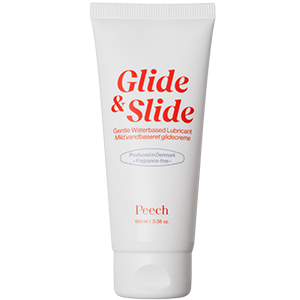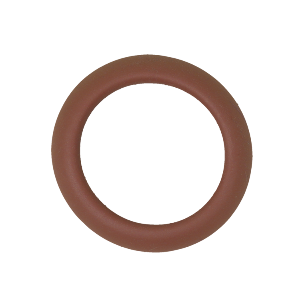Everything to know about contraceptions
There are many different forms of contraception - some can prevent pregnancy, while others can protect against the transmission of STDs. EVERYONE can use some form of contraception, and in this guide you will get advice and recommendations on which form of contraception is right for you.
What kind of contraception should I use?
The contraceptive method that works best for you depends on many factors. Some forms of contraception can only be used by certain bodies, some must be used very precisely to be effective, and if you want to use the contraception to protect against STDs, there are several options you can sort out. Not all contraceptive methods work or are suitable for everyone, and it may be a good idea to talk to your doctor or experiment to find out what is best for you.
At minprævention.dk, which is an information campaign site created by Bayer Denmark (which, amongst other things, manufactures birth control pills), you can take the contraceptive test, which can help you find out what works best for you. The test is mostly aimed at people with a vulva, but this may also be related to the fact that the vast majority of contraceptive methods are aimed at the vulva. Note that the test is in Danish.
Condoms for the penis
Condoms for the penis are the most widely used form of contraception when it comes to penetrative sex. The condom is rolled over the penis and acts as a barrier to "catch" sperm and prevent the potential transmission of STDs. However, condoms can also be used on sex toys, over the fingers or even cut into a dental dam (a real dental dam is more effective though). Condoms come in many different colors, textures, flavors and perhaps most importantly; sizes. Many people with a penis express that condoms can be uncomfortable to wear, but this is often because the condom is the wrong size. These condoms from Mr. Size comes in 7 different sizes, so there is a good chance of finding the perfect size. Condoms are typically made of latex, which can stretch up to 800%. Latex condoms are only compatible with water-based lube, as silicone or oil-based lube breaks down the latex surface - they should therefore not be used together! If you are allergic or would like to use silicone-based lube, there are also latex-free versions, such as these from Durex.
If condoms are used correctly, they are up to 97% safe as a contraceptive method against pregnancy and the transmission of STDs. But remember that condoms can also break or slip off, and while the risk is small, condoms cannot provide 100% protection against herpes. This is because herpes sores (which are highly infectious) can be placed in areas the condom can't cover.
Condoms for vagina
Condoms for the vagina, also known as a femidom or the female condom, are condoms that can be inserted into the vagina or anus, and act as a barrier like the condom for the penis. Like classic condoms, the Femidom is a sort of holster with an opening in one end. There is also a ring at each end - the ring at the closed end makes insertion easier, and the ring at the open end holds the condom in place, as it must be placed on the outside of the vagina.
When used correctly, a vaginal condom provides up to 95% safety. But because they are not particularly widespread, there is a high risk of it being used incorrectly and thus not 95 % safe.
Dental dams
Like condoms, a dental dam is a barrier that can prevent the transmission of STDs. Dental dams can be used for oral sex, by placing it over the vagina, anus or penis (though that's not the most obvious choice for the penis). Dental dams comes in different flavors and materials. These dental dams from Medintim come in a latex or polyurethane version, and you can choose between strawberry or vanilla flavor. When used correctly, dental dams provide high protection.
Contraception with hormones
There are several different contraceptive methods that work using hormones. Common to hormonal contraception is that they provide effective protection against pregnancy when used correctly. However, none of the hormonal contraceptives protect against STDs, so you need to combine it with some form of condom or dental dam. Typical birth control pills contain both estrogen and progestin which prevents ovulation, compared to minipills that only contain progestin. Minipills therefore do not prevent ovulation, but instead create a hard-to-penetrate mucus plug at the cervix, which acts as a barrier. Minipills are an obvious choice for those who can't tolerate the amount of hormones in classic birth control pills. The contraceptive injection also only contains progestin, and must be injected by a doctor every 3 months. The vaginal ring is a flexible small plastic ring that is inserted into the vagina. Where the ring is placed inside the vagina is not that important, as long as it sits comfortably - you shouldn't be able to feel a vaginal ring when placed correctly. The ring must be in place for 3 weeks, after which you take it out and take a 7-day break. A contraceptive implant is a small rod containing progestogen, which is implanted under the skin and then provides protection against pregnancy for the next 3 years. A contraceptive patch is a patch that is placed on the skin for 3 weeks, after which the hormones are absorbed through the skin. Finally there is the IUD and the IUS. The IUS works because of the hormone progestin, while the IUD does not contain hormones - instead in releases copper. The IUD provides slightly less protection than the hormonal IUD, but on the other hand it provides protection for a longer time; the IUD provides protection for 5-8 years, while the IUS works for 3-6 years.
Spermicide
Spermicides are creams or gels that are put in the vagina immediately before sex. On average, spermicides provide only 70% protection against pregnancy, which is why they are typically used in combination with other forms of contraception like condoms. Spermicide cream also does not protect against STDs.
Contraceptive diaphragm or cap
A diaphragm is a dome-shaped cup made of silicone or latex that is placed in the vagina before sex, and works by preventing sperm from reaching the uterus. Up to 24 hours before sex, you can place the diaphragm by folding it like a menstrual cup and placing it so that it covers the entrance to the cervix. To make it more effective, you can fill the diaphragm with a spermicide. After sex, the diaphragm must remain in place for at least 6 hours. The diaphragm can be bought without a prescription and you can place it in the vagina yourself. When used correctly, a diaphragm provides 94% protection against pregnancy, but with more casual use it is 88%. The diaphragm does not protect against the transmission of STDs.
The pull-out method
The very popular and most unsafe contraceptive method. The method works, as the name suggests, by having the person with the penis pull out before they ejaculate. The method is very uncertain and often depends on the person's self-awareness and self-control, which may be a little weakened in the situation. In addition, the penis can also release presperm before the actual ejaculation, which still contains sperm that can lead to pregnancy. The pull-out method also does not provide protection against STDs.
Sterilization
A much less widespread form of contraception against pregnancy that can be performed on both people with a penis and people with a uterus. For people with a penis, sterilization works by cutting the vas deferens so that no sperm is released. For people with a uterus it works by cutting the connection between the ovaries and the uterus. Generally a sterilization is a permanent contraceptive method against pregnancy. A sterilization can be reversed later, but the likelihood of a succesful reversal lessens with time. Typically, people with a reversed sterilization need a little extra help such as IVF or for the sperm cells to be matured in a laboratory in order for pregnancy to be possible.
Emergency contraception
If you are in doubt as to whether the contraceptive method you have used really has prevented pregnancy, you can use an emergency contraception. Emergency contraception, also known as the morning after pill, must be taken by the person with the vulva. There are two types of emergency contraceptions: The most widely used one contains a high dose of progestin, just like minipills (however, they have a much lower dose), and must be taken no later than 12-72 hours after sex. This method works in 85% of cases. The second type of emergency contraception contains the substance ulipristal acetate, can be taken for up to 5 days after sex and works in approximately 90% of cases. Both types of pills can cause nausea, headache and fatigue that usually disappears within 48 hours. Emergency contraception can be bought at the pharmacy with no prescription, but must never be used as a substitute for other forms of contraception. Emergency contraception must only be taken once in each menstrual cycle, in order to lower the risk of bleeding disorders that can occur due to the high amounts of hormones in the pills.
Sources:
https://www.apoteket.dk/sundhed/praevention/femidom-kondom-til-kwinder
https://www.minprævention.dk
https://www.sundhed.dk/borger/patienthaandbogen/maend/sygdomme/diverse/sterilisering-mand/





